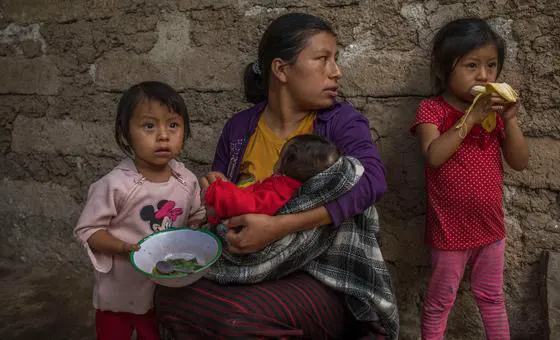An estimated 333 million children, one in six of the world’s child population, are grappling with extreme poverty, revealed a report jointly prepared by UNICEF and the World Bank.
UNICEF and the World Bank collaborated on a report titled “Global Trends in Child Monetary Poverty According to International Poverty Lines,” which was published on Wednesday.
The report brings to light that the number of children living on less than $2.15 a day has seen a notable decline, dropping from 383 million to 333 million, marking a 13% decrease from 2013 to 2022.
“A world where 333 million children live in extreme poverty – deprived not only of basic needs but also dignity, opportunity or hope – is simply intolerable,” said World Bank Global Director for Poverty and Equity Luis-Felipe Lopez-Calva.
Of significant concern is the finding that the Sub-Saharan Africa region bears the highest burden, with a staggering 40% of children living in extreme poverty. This figure has seen a substantial increase, climbing from 54.8% in 2013 to a disturbing 71.1% in 2022.
“Seven years ago, the world made a promise to end extreme child poverty by 2030. We have made progress, showing that with the right investments and will, there is a way to lift millions of children out of what is often a vicious cycle of poverty,” UNICEF Executive Director Catherine Russell said in a statement.
“But compounding crises, from the impacts of COVID-19, conflict, climate change and economic shocks, have stalled progress, and left millions of children in extreme poverty,” Russell further stated.“We cannot fail these children now. Ending child poverty is a policy choice,” she underlined.
South Asia has a rate of 9.7pc of children living in extreme poverty in 2022 (62m), and accounts for 18.6pc of the world’s extremely poor children. Nearly 90pc of extremely poor children in the world reside in either Sub-Saharan Africa or South Asia.
Rapid population growth, limited social protection measures, and challenging global trends including Covid-19, conflict, and climate-related disasters, have resulted in the steep increase. Meanwhile, all other regions in the world have seen a steady decline in extreme poverty rates, with the exception of the Middle East and North Africa.
“Compounding crises, from the impacts of Covid-19, conflict, climate change and economic shocks, have stalled progress, and left millions of children in extreme poverty. We cannot fail these children now. Ending child poverty is a policy choice. Efforts must be redoubled to ensure that all children have access to essential services, including education, nutrition, health care and social protection, while addressing the root causes of extreme poverty,” says Unicef Executive Director Catherine Russell.
While 45pc of extremely poor children live in low-income countries; half of all extremely poor children live in lower middle-income countries. As a result, the design of effective policy portfolios needs to take that into consideration as well, the report says.—APP









